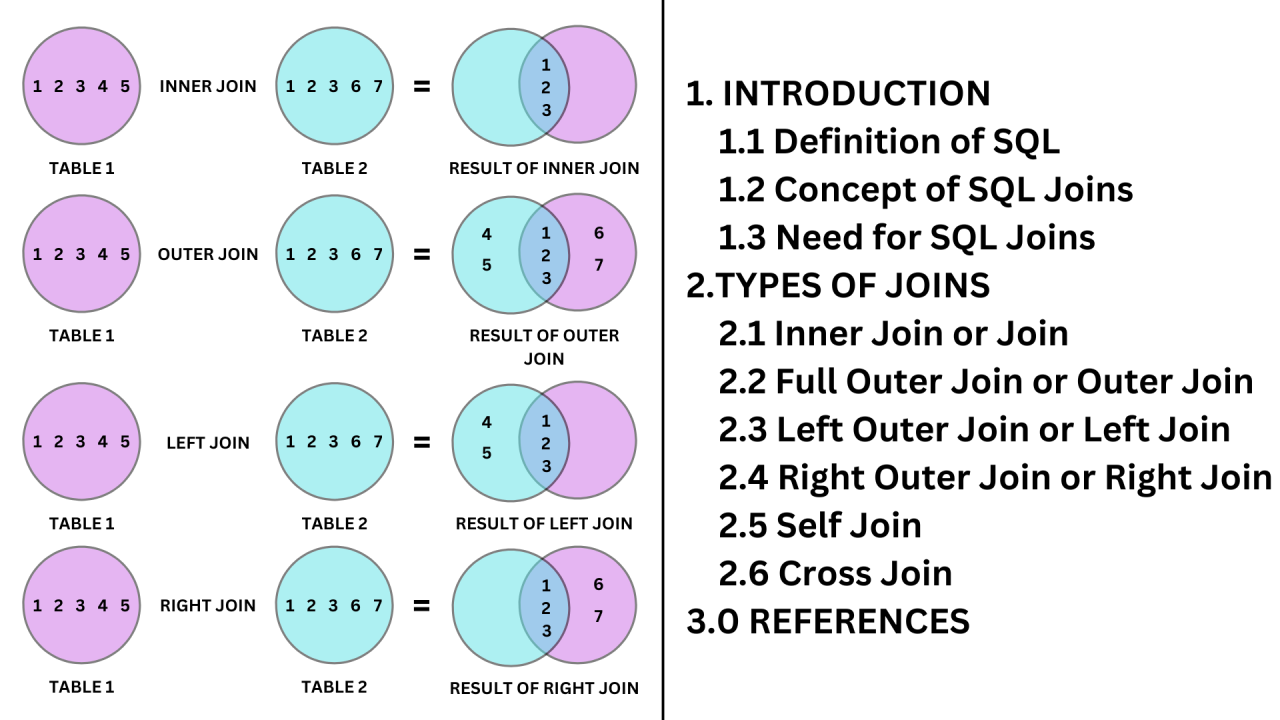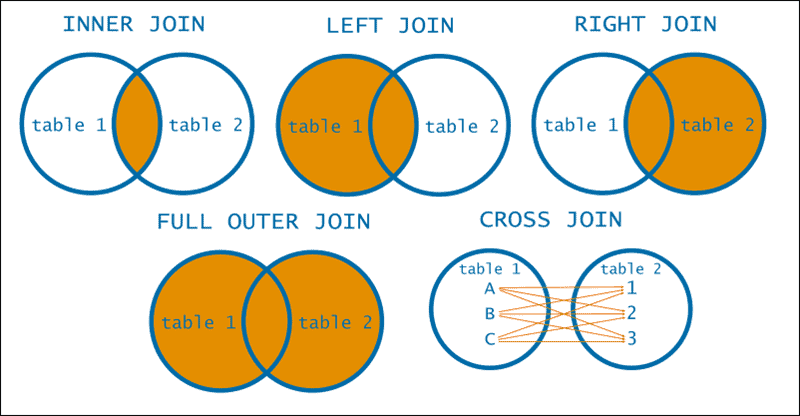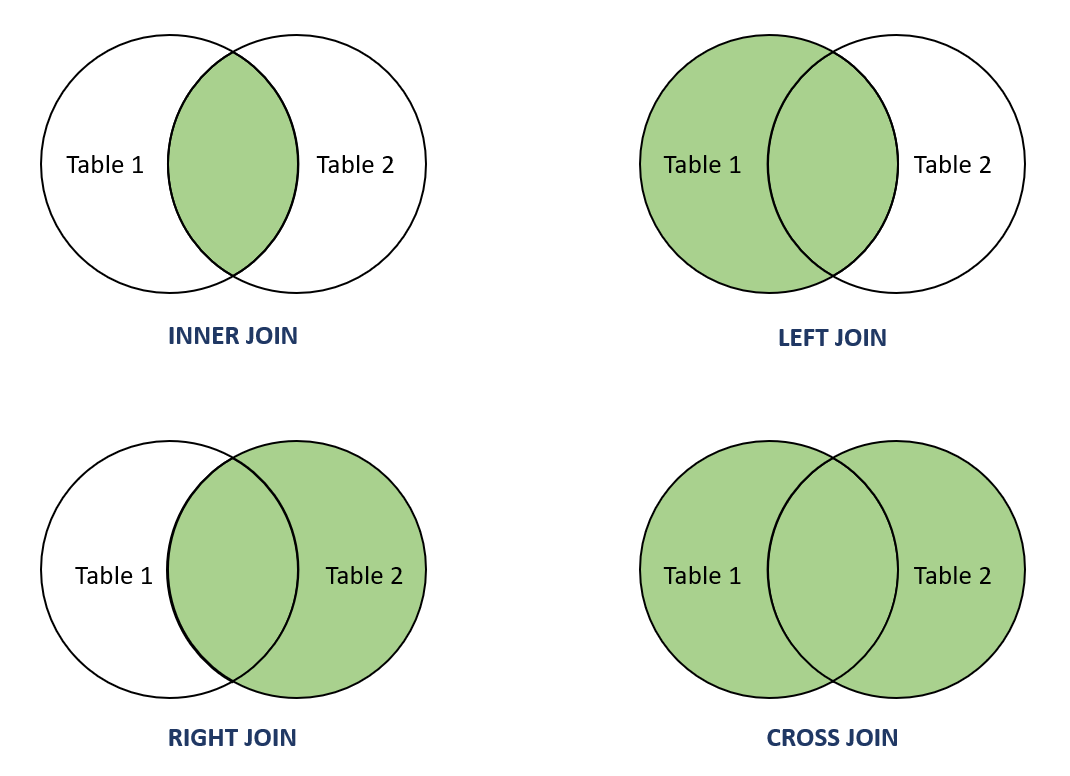What is the Difference Between Cross Join and Inner Join An inner join matches all records between tables but only returns matching values. It is the intersection of two tables. The cross join will display all the rows of both tables.Natural Join joins two tables based on same attribute name and datatypes. Cross Join will produce cross or cartesian product of two tables .Disadvantages of Cross Join in SQL Server
MS SQL Cross join is generally not preferred as it takes a lot of time to generate all combinations and produces a considerable result set that is not often useful.
Should I use cross join : When Should I Use Cross-Join Use a cross join when you want to generate all possible combinations of rows from two tables, regardless of any specific condition or relationship. It's suitable for scenarios where you need a complete pairing of every row from one table with every row from another.
Is cross join better than inner join
example if table1 contains 2 records and table2 contains 3 records then result of the query is 2*3 = 6 records. So dont go for cross join until you need that. The inner join will give the result of matched records between two tables where as the cross join gives you the possible combinations between two tables.
What is the difference between cross join and left join : LEFT OUTER JOIN – You get all rows from the left table, plus rows from the right table, where they match the left. RIGHT OUTER JOIN – Opposite of Left Join (Rarely used). CROSS JOIN – Joins all rows in both table.
Remember that both of these types of joins can improve database performance, but the inner one will perform better when the number of tuples is large, and the database is designed to support them. If you have a two-tier architecture or you have linked database features, the two-table join will work better for you.
Though the syntax for the CROSS JOIN query in SQL seems quite simple and straightforward, you need to be cautious with it. First, CROSS JOINs can potentially return huge result sets that are difficult to manage and analyze. Second, you must remember the exact names of the tables and columns to run the query.
Which type of join is fastest
Outer joins, especially left outer joins, are faster and better performance in most cases. The satisfaction of the inner join condition is mandatory. There are no conditions that we have to meet in the outer join query necessarily. There is no output of those entries not matching with the entries of another table.Note: The CROSS JOIN keyword returns all matching records from both tables whether the other table matches or not. So, if there are rows in "Customers" that do not have matches in "Orders", or if there are rows in "Orders" that do not have matches in "Customers", those rows will be listed as well.A cross join returns the Cartesian product of rows from the rowsets in the join. In other words, it will combine each row from the first rowset with each row from the second rowset.
Inner Join Vs Outer Join: Comparison Table
| Inner Join | Outer Join |
|---|---|
| You can observe the lack of performance because SQL inner join is slower. | Outer joins, especially left outer joins, are faster and better performance in most cases. |
Which join is mostly used : We'll start with the most common JOIN type, which is INNER JOIN (or simply JOIN ). This join type is used to display matching records from both tables.
What is the difference between join and cross join in SQL : CROSS JOIN is the full cartesian product of the two sides of a JOIN. INNER JOIN is a reduction of the cartesian product—we specify a predicate and get a result where the predicate matches.
Which join is best in SQL
Which join type you use depends on whether you want to include unmatched rows in your results:
- If you need unmatched rows in the primary table, use a left outer join.
- If you don't need unmatched rows, use an inner join.
Outer joins, especially left outer joins, are faster and better performance in most cases. The satisfaction of the inner join condition is mandatory. There are no conditions that we have to meet in the outer join query necessarily. There is no output of those entries not matching with the entries of another table.A cross join returns the Cartesian product of rows from the rowsets in the join. In other words, it will combine each row from the first rowset with each row from the second rowset.
Which join is mostly used in SQL : We'll start with the most common JOIN type, which is INNER JOIN (or simply JOIN ). This join type is used to display matching records from both tables.





